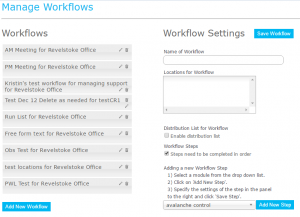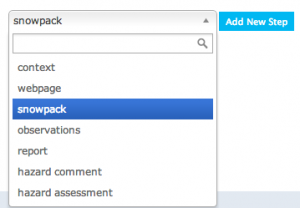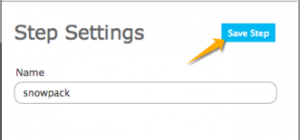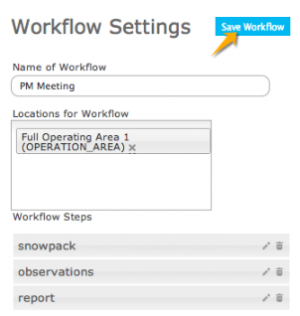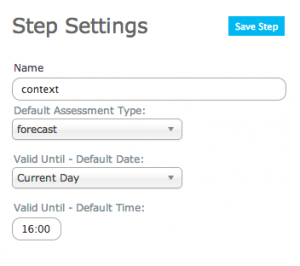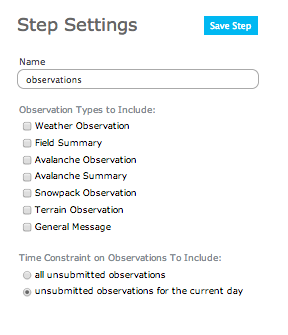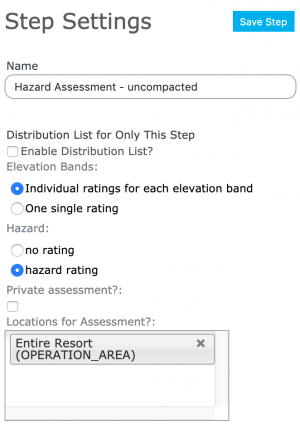Difference between revisions of "Creating a workflow template"
Jump to navigation
Jump to search
m |
(→Background) |
||
| Line 4: | Line 4: | ||
This document describes how to create a new workflow in the InfoEx system. | This document describes how to create a new workflow in the InfoEx system. | ||
==Background== | ==Background== | ||
| − | A workflow links together user-specified tasks into a logical order so that users can repeatedly move through the same steps. | + | A workflow links together user-specified tasks into a logical order so that users can repeatedly move through the same steps. See [[Workflow Overview]] for more background on this feature of the InfoEx application. |
| − | Creating a workflow consists of two main | + | |
| − | + | Creating a workflow template consists of two main steps: | |
| − | + | # Defining the workflow name and choosing its general features | |
| − | + | # Adding at least one workflow step and saving the workflow | |
==Step-by-step description== | ==Step-by-step description== | ||
Revision as of 11:48, 24 December 2013
| REQUIREMENTS | |
| Permission | Operation administrator and higher |
| Connectivity | Online and partial offline |
This document describes how to create a new workflow in the InfoEx system.
Background
A workflow links together user-specified tasks into a logical order so that users can repeatedly move through the same steps. See Workflow Overview for more background on this feature of the InfoEx application.
Creating a workflow template consists of two main steps:
- Defining the workflow name and choosing its general features
- Adding at least one workflow step and saving the workflow
Step-by-step description
| 1. | login to the infoEx system with an account that has Operation Administrator privileges. | ||||||||||||
| 2. | if you are enabled in more than one operation you must select an operation on the first screen after logging in. | ||||||||||||
| 3. | TASK 1: Create a new workflow
| ||||||||||||
| 4. | TASK 2: Add a step to the new workflow.
|
Details of: Types of workflow steps and the information required to set them up
| Context: | A 'context' step provides information about the workflow itself and offers a place to record the following information:
| ||||
| Webpage: | A 'webpage' step allows the workflow user to view a stored webpage without leaving the application. The following information is required to set it up:
| ||||
| Snowpack: | A 'snowpack' step allows the workflow user to add a snowpack description in narrative form. The following information is required to set it up:
| ||||
| Observation: | An 'observation' step allows you to fill out a customized observation as part of the workflow. The following information is required to set it up:
| ||||
| Reports: | A 'report' step allows you to view a customized infoex report as part of the workflow. The following information is required to set it up.
| ||||
| Hazard Comment: | A 'hazard comment' step allows you to create and add a comment about avalanche hazard in narrative form to your workflow. The following information is required to set it up:
| ||||
| Hazard Assessment: | A 'hazard assessment step allows you to create and add a hazard assessment to your workflow. The following information is required to set it up:
|
Related documents
Functionality tested by
- Date: Nov. 15, 2013 / John Kelly / QA Server / Version 3.0.0

